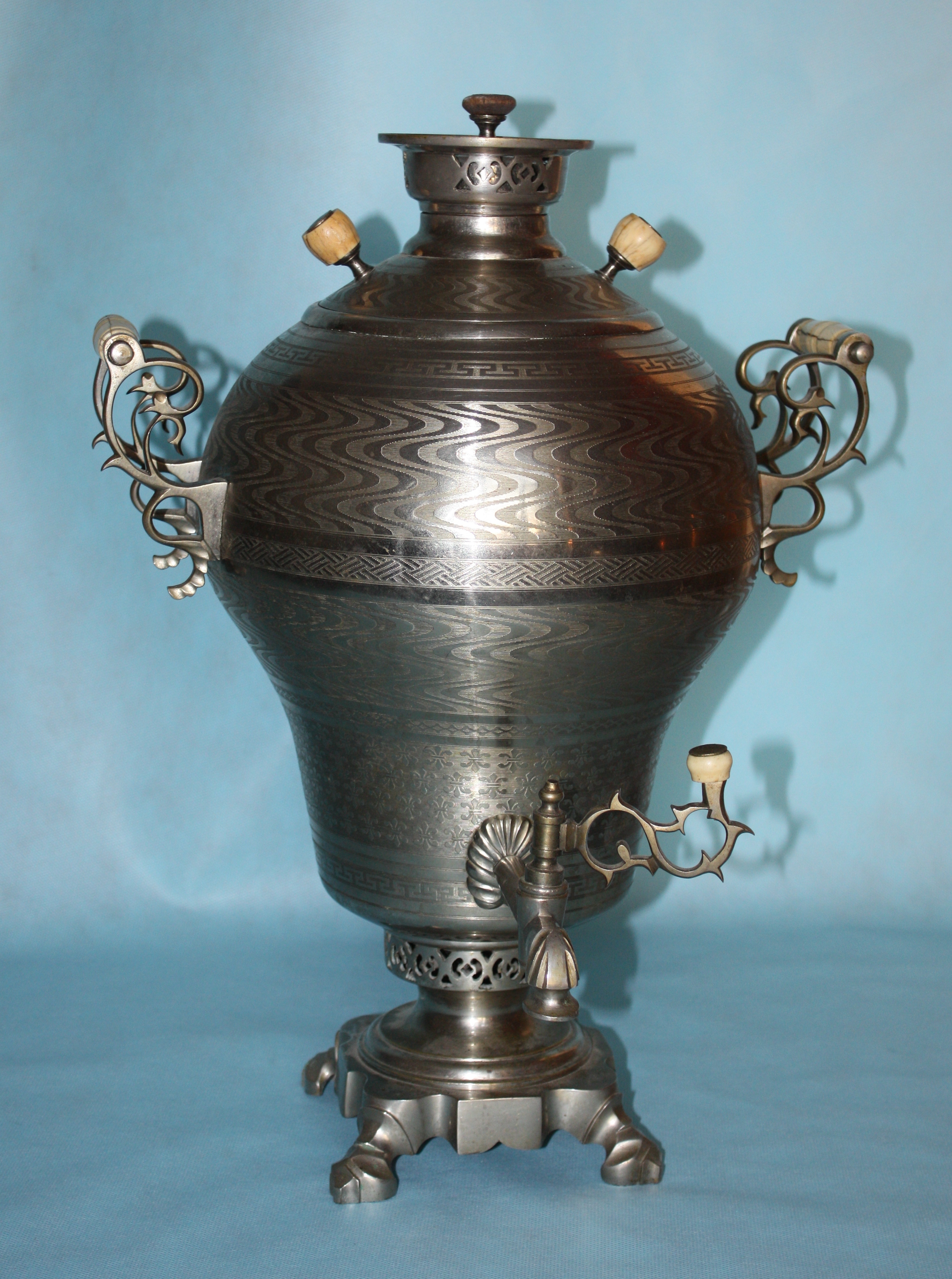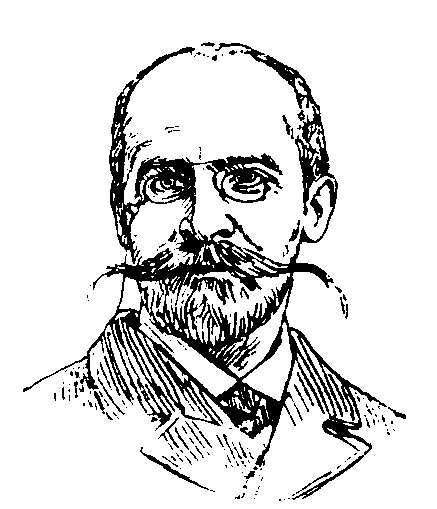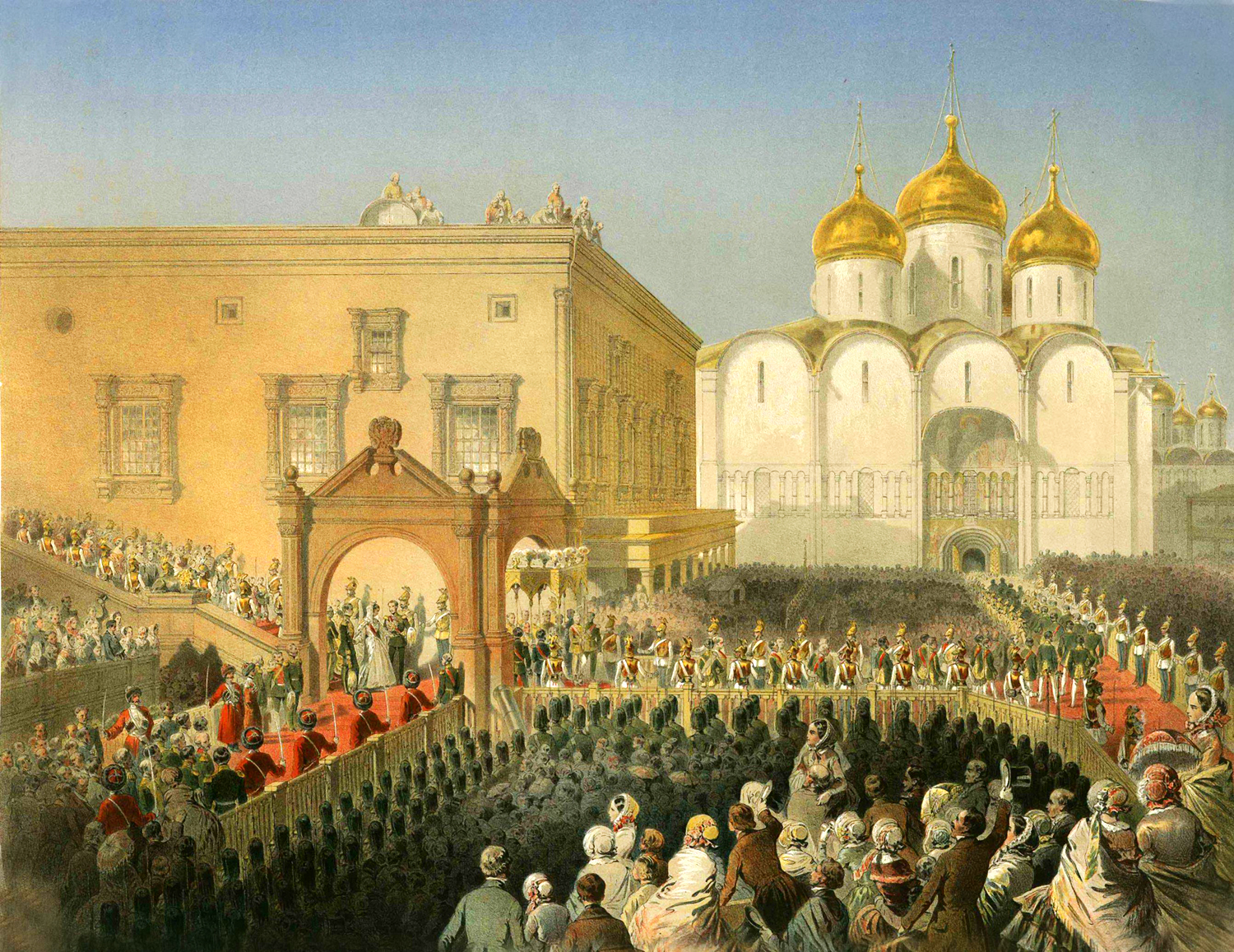|
Lisitsyns
The Lisitsyn family () was a family of metalworkers and businessmen, and the first documented manufacturers of Samovars, living in the city of Tula in the Empire of Russia, during the 18th and 19th centuries. Notable members Fyodor Ivanovich Lisitsyn () was a progenitor of the dynasty, a weapons-maker and metalworker at his own brass factory in Tula. Ivan Fyodorovich Lisitsyn () and Nazar Fyodorovich Lisitsyn () were the two sons of Fyodor Lisitsyn. From their childhood they were engaged in metalworking at their family's factory. In 1778 they made a samovar, and the same year Nazar Lisitsyn registered the first samovar-making factory in Russia. They may not have been the inventors of samovar, but they were the first historically recorded and documented samovar-makers, and their various and beautiful samovar designs became very influential throughout the later history of samovar-making. Nikita Nazarovich Lisitsyn () was a son of Nazar Lisitsyn who inherited the samovar factory ... [...More Info...] [...Related Items...] OR: [Wikipedia] [Google] [Baidu] |
Samovar
A samovar (, , ) is a metal container traditionally used to heat and boil water. Although originating in Russia, the samovar is well known outside of Russia and has spread through Russian culture to other parts of Eastern Europe, as well as Western and Central and South Asia. Since the heated water is typically used to make tea, many samovars have a ring-shaped attachment (, ) around the chimney to hold and heat a teapot filled with tea concentrate. Though traditionally heated with coal or kindling, many newer samovars use electricity to heat water in a manner similar to an electric water boiler. Description A Samovar typically is made of iron, copper, polished brass, bronze, silver, gold, tin, or nickel — and consists of a body, base and chimney, cover and steam vent, handles, tap and key, crown and ring, chimney extension and cap, drip-bowl, and teapot. The body shape can be an urn, krater, barrel, cylinder, or sphere. Sizes and designs vary, from very large capac ... [...More Info...] [...Related Items...] OR: [Wikipedia] [Google] [Baidu] |
Russian Inventors
This is a list of inventors from the Russian Federation, Soviet Union, Russian Empire, Tsardom of Russia and Grand Duchy of Moscow, including both ethnic Russians and people of other ethnicities. This list also includes those who were born in Russia or its predecessor states but later emigrated, and those who were born elsewhere but immigrated to the country or worked there for a considerable time, (producing inventions on Russian soil). For Russian inventions in chronological order, see the Timeline of Russian inventions and technology records. Alphabetical list A B C D E F G H I J K L M N O P R S T U V W Y Z See also * List of Russian scientists * Russian culture * Timeline of Russian inventions and technology records References {{DEFAULTSORT:Russian Inventors Russian inventors, * Lists of Russian people by occupation, Inventors Lists of inventors Russia history-related lists, Inventors ... [...More Info...] [...Related Items...] OR: [Wikipedia] [Google] [Baidu] |
Metalworker
Metalworking is the process of shaping and reshaping metals in order to create useful objects, parts, assemblies, and large scale structures. As a term, it covers a wide and diverse range of processes, skills, and tools for producing objects on every scale: from huge ships, buildings, and bridges, down to precise engine parts and delicate jewellery. The historical roots of metalworking predate recorded history; its use spans cultures, civilizations and millennia. It has evolved from shaping soft, native metals like gold with simple hand tools, through the smelting of ores and hot forging of harder metals like iron, up to and including highly technical modern processes such as machining and welding. It has been used as an industry, a driver of trade, individual hobbies, and in the creation of art; it can be regarded as both a science and a craft. Modern metalworking processes, though diverse and specialized, can be categorized into one of three broad areas known as forming, cuttin ... [...More Info...] [...Related Items...] OR: [Wikipedia] [Google] [Baidu] |
Tula, Russia
Tula (, ) is the largest city and the administrative center of Tula Oblast in Russia, located south of Moscow. Tula is located in the northern Central Russian Upland on the banks of the Upa (river), Upa River, a tributary of the Oka (river), Oka. At the Russian Census (2010), 2010 census, Tula had a population of 501,169, an increase from 481,216 in 2002, making it the List of cities and towns in Russia by population, 32nd-largest city in Russia by population.A primarily industrial types of inhabited localities in Russia, city, Tula was a fortress at the border of the Principality of Ryazan. The city was seized by Ivan Bolotnikov in 1606 during the Time of Troubles and withstood a four-month siege by the Tsar's army. Historically, Tula has been a major centre for the manufacture of Weapon, armaments. The Demidov family built the first armament factory in Russia in the city, in what would become the Tula Arms Plant, which still operates to this day. Tula is home to the Klokovo (a ... [...More Info...] [...Related Items...] OR: [Wikipedia] [Google] [Baidu] |
Progenitor
In genealogy, a progenitor (rarer: primogenitor; or ''Ahnherr'') is the founder (sometimes one that is legendary) of a family, line of descent, gens, clan, tribe, noble house, or ethnic group.. Ebenda''Ahnherr:''"Stammvater eines Geschlechts". Genealogy (commonly known as family history) understands a progenitor to be the earliest recorded ancestor of a consanguineous family group of descendants. Progenitors are sometimes used to describe the status of a genealogical research project, or in order to compare the availability of genealogical data in different times and places. Often, progenitors are implied to be patrilineal. If a patrilineal dynasty is considered, each such dynasty has exactly one progenitor. Aristocratic and dynastic families often look back to an ancestor who is seen as the founder and progenitor of their house (i.e. family line). Even the old Roman legal concept of agnates (Latin for "descendants") was based on the idea of the unbroken family lin ... [...More Info...] [...Related Items...] OR: [Wikipedia] [Google] [Baidu] |
Nizhny Novgorod
Nizhny Novgorod ( ; rus, links=no, Нижний Новгород, a=Ru-Nizhny Novgorod.ogg, p=ˈnʲiʐnʲɪj ˈnovɡərət, t=Lower Newtown; colloquially shortened to Nizhny) is a city and the administrative centre of Nizhny Novgorod Oblast and the Volga Federal District in Russia. The city is located at the confluence of the Oka (river), Oka and the Volga rivers in Central Russia, with a population of over 1.2 million residents, up to roughly 1.7 million residents in the urban agglomeration. Nizhny Novgorod is the List of cities and towns in Russia by population, sixth-largest city in Russia, the Volga#Biggest cities on the shores of the Volga, second-most populous city on the Volga, as well as the Volga Federal District. The city is located 420 kilometers (260 mi) east of Moscow. It is an important economic, transportation, scientific, educational and cultural centre in Russia and the vast Volga-Vyatka economic region, and the main centre of river tourism in Russia. In the his ... [...More Info...] [...Related Items...] OR: [Wikipedia] [Google] [Baidu] |
Bukhara
Bukhara ( ) is the List of cities in Uzbekistan, seventh-largest city in Uzbekistan by population, with 280,187 residents . It is the capital of Bukhara Region. People have inhabited the region around Bukhara for at least five millennia, and the city has existed for half that time. Located on the Silk Road, the city has long served as a center of trade, scholarship, culture, and religion. Bukhara served as the capital of the Khanate of Bukhara, Emirate of Bukhara and later Bukhara People’s Soviet Republic. It was the birthplace of the scholar Imam Bukhari. The city has been known as "Noble Bukhara" (''Bukhārā-ye sharīf''). Bukhara has about 140 architectural monuments. UNESCO has listed the historic center of Bukhara (which contains numerous mosques and madrasas) as a List of World Heritage Sites in Uzbekistan, World Heritage Site. Names The exact name of the city of Bukhara in ancient times is unknown. The whole Oasis of Bukhara, oasis was called Bukhara in ancient times, ... [...More Info...] [...Related Items...] OR: [Wikipedia] [Google] [Baidu] |
Khiva
Khiva ( uz-Latn-Cyrl, Xiva, Хива, ; other names) is a district-level city of approximately 93,000 people in Khorazm Region, Uzbekistan. According to archaeological data, the city was established around 2,500 years ago. In 1997, Khiva celebrated its 2500th anniversary. It is the former capital of Khwarezmia, the Khanate of Khiva, and the Khorezm People's Soviet Republic. Itchan Kala in Khiva was the first site in Uzbekistan to be inscribed on the World Heritage List (1991). The astronomer, historian and polymath, Al-Biruni (973–1048 CE) was born in either Khiva or the nearby city of Kath. Etymology The origin of the name Khiva is unknown, but many contradictory stories have been told to explain it. A traditional story attributes the name to one of the sons of the prophet Noah: "It is said that Shem, after the flood, he found himself wandering in the desert alone. Having fallen asleep, he dreamt of 300 burning torches. On waking up, he was pleased with this omen, he ... [...More Info...] [...Related Items...] OR: [Wikipedia] [Google] [Baidu] |
Kaftan
A kaftan or caftan (; , ; , ; ) is a variant of the robe or tunic. Originating in Asia, it has been worn by a number of cultures around the world for thousands of years. In Russian usage, ''kaftan'' instead refers to a style of men's long suit with tight sleeves. It may be made of wool, cashmere wool, cashmere, silk, or cotton, and may be worn with a sash. Popular during the time of the Ottoman Empire, detailed and elaborately designed garments were given to ambassadors and other important guests at the Topkapı Palace. Variations of the kaftan were inherited by cultures throughout Asia and were worn by individuals in Russia (North Asia, Eastern Europe and formerly Central Asia), Southwest Asia and Northern Africa. Styles, uses, and names for the kaftan vary from culture to culture. The kaftan is often worn as a Coat (clothing), coat or as an overdress, usually having long sleeves and reaching to the ankles. In regions with a warm climate, it is worn as a light-weight, loose-f ... [...More Info...] [...Related Items...] OR: [Wikipedia] [Google] [Baidu] |
Alexander II Of Russia
Alexander II ( rus, Алекса́ндр II Никола́евич, Aleksándr II Nikoláyevich, p=ɐlʲɪˈksandr ftɐˈroj nʲɪkɐˈlajɪvʲɪtɕ; 29 April 181813 March 1881) was Emperor of Russia, Congress Poland, King of Poland and Grand Duke of Finland from 2 March 1855 until Assassination of Alexander II of Russia, his assassination in 1881. Alexander's most significant reform as emperor was the emancipation reform of 1861, emancipation of Serfdom in Russia, Russia's serfs in 1861, for which he is known as Alexander the Liberator ( rus, Алекса́ндр Освободи́тель, r=Aleksándr Osvobodítel, p=ɐlʲɪˈksandr ɐsvəbɐˈdʲitʲɪlʲ). The tsar was responsible for other Liberalism, liberal reforms, including reorganizing the judicial system, setting up elected local judges, abolishing corporal punishment, promoting local self-government through the ''zemstvo'' system, imposing universal military service, ending some privileges of the nobility, and promot ... [...More Info...] [...Related Items...] OR: [Wikipedia] [Google] [Baidu] |






